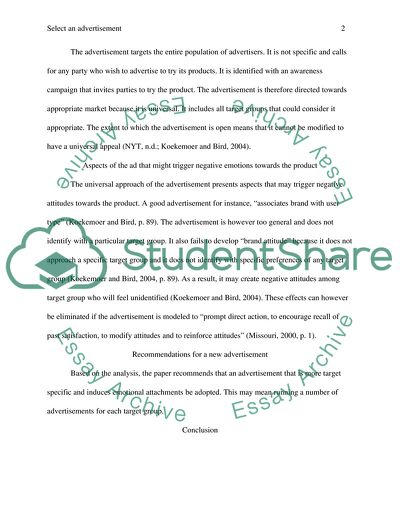Select an advertisement (from any media) Essay Example | Topics and Well Written Essays - 500 words. https://studentshare.org/marketing/1770909-select-an-advertisement-from-any-media
Select an Advertisement (from Any Media) Essay Example | Topics and Well Written Essays - 500 Words. https://studentshare.org/marketing/1770909-select-an-advertisement-from-any-media.


